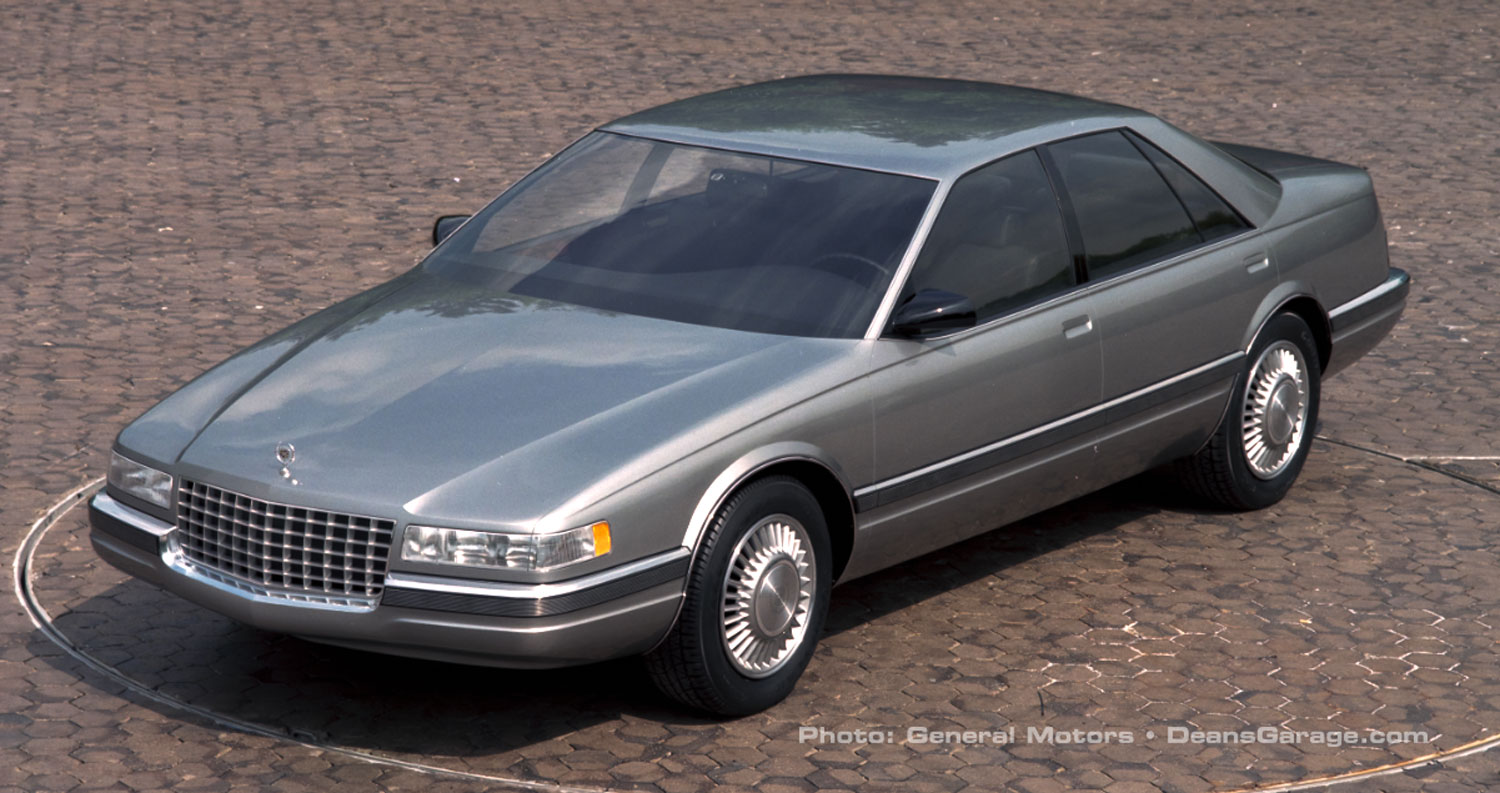
Design of the 1992 Cadillac Seville and Eldorado
by Dick Ruzzin, Dennis Little, and Scott Wassell
Edited by Gary Smith
Part Three
Seville Creation
Dennis Little:
Cosmetic Fixes
Our Studio had two major challenges: update Cadillac’s marketing image, and create cosmetic improvements to the existing products. Cadillac buyers had moved beyond the design cues of gold packages, padded tops, red exteriors with white interiors, whitewall tires, and fake wire wheel discs. They were buying BMW and Mercedes Benz brands.
1988 Seville
One of the first cars earmarked for change was the 1988 Seville. The rework of the 1988 Seville included de-chroming a good portion of the car, introducing European amber and red taillights, adding lower ground effects moldings, replacing the wire wheel discs with cast wheels, adding dual exhaust tips, and downplaying the Cadillac badging on the car.
Lapel Pins
According to market research, the Cadillac brand and reputation was that of a very large traditional American car. It was not considered an international driver’s car. The new younger audience did not want to associate with Cadillac’s “old American car image.” With the hopes that new designs would entice younger buyers to reconsider Cadillac, the studio started with downplaying attention to Cadillac badging. When the wreath and crest badge appeared on the car, the badge was shown in monotone matte silver void of any color. The studio also reassessed the script Cadillac lettering. Cadillac marketing, however, was not ready for that change.
To convince marketing to move on from the traditional feel of Cadillac, Dick and I showed the marketing staff a lapel pin with a muted, more contemporary feel. We used a black dry marker to tone down the garish gold wreath and crest lapel pins that everyone wore. The muted lapel pin proved to be a small step in establishing a mental adjustment towards a new Cadillac image, which proved to be very successful. Once the marketing staff saw their co-workers’ studio-adjusted lapel pins, they came to me in the studio and requested that their lapel pins also be toned down.
1992 Seville Design Development
Scott Wassell:
Our initial sketch exploration took us down a stylized ‘bustle-back’ route (sloped off rear end)—the thinking being that since the down-sized car was reminiscent of the ’75 Seville, maybe there was some benefit to starting off with the ’80 bustle-back design for inspiration. It was really only meant as a thought starter to get us off and running. After this initial sketch phase, I remember us feeling pretty lukewarm about what we had come up with.
I remember Dennis Little making a full-size side view rendering that had a much more contemporary feel, with a high, level rear deck, a more stood up rear end and a fast sail panel. It looked terrific! Very modern and international in feel, while still capturing Cadillac’s crispness and refinement.
Dennis Little:
We started exploring what the 1992 Seville would look like through sketches and full size airbrush renderings. Cadillac marketing had charged the Studio to create a design that appealed to both the traditional buyer and the younger new customer. That target seemed almost impossible to meet. I decided to first focus on creating a great looking car, and then evaluate the design to see if it was “Cadillac enough.”
At the same time in Italy, Pininfarina Design was working on their version of the next Eldorado. Pininfarina’s history with Cadillac, which I knew nothing about, dated back to Batista Pininfarina and Harley Earl. I can only assume that Dick and Chuck Jordan would have been privy to this effort.
Advanced Design 1 Studio was also tasked with pursuing an Eldorado design solution. Since things were moving quickly and the pressure was constant, I never took the time to wander down to Advanced 1 Studio to see what they were working on.
Advanced Design 1 Model
Late one afternoon at the end of May 1987, the large folding doors at the far end of Cadillac Studio opened. Tony, one of the building’s material handling crew, was in the process of moving a covered full-size clay model into the studio. This caught my attention because it was the job of assistant chief designers to manage what would come and go within the studio.
I asked Tony if he had the wrong studio, because the studio was not slated to have a full-size clay model delivered. However, Tony’s paperwork showed that the model from Advanced 1 Studio was being sent to Cadillac Studio.
With the large folding doors open and the full-size clay half moved into the studio, I heard the booming voice of Chuck: “Little, this is the next Seville,” as he smiled and walked toward me. It didn’t matter if Dick knew about the model transfer. Chuck being the VP of Design had the authority to direct what he felt was appropriate during the design process.
Once the full-size clay was set up in the studio, I pulled off the cover and saw to my horror a 1930s “throwback” design reminiscent of a vintage Rolls Royce. Now what?
Dick and I decided to try and redirect Advanced 1’s design toward a more international flavor, which both Cadillac studio and Cadillac marketing advocated. We thought we could do this on the following Saturday, since Chuck was slated to fly to the West Coast design studios over the weekend. I called Lucy Friday afternoon. She verified that, as we spoke, Chuck was on his way to the airport.
Saturday’s Mock-up Marathon (June 1987)
Scott Wassell:
Based on Dennis’ full-size rendering, with sheets of body colored di-noc and foam core, we mocked up a 3-D version on our full-size clay model, using the foam core as ribbing to prop up the high rear deck of the new design over the slanted, not-so-great bustle-back design which was underneath. We also mocked up a fast sail panel and, I believe I’m the one who airbrushed the groove that ran along the body side just under the belt line. Overall, the whole mock-up job took us about one day to complete. Right away we felt like we really had something!
Dennis Little
The studio normally worked from 7:00 am to 1:00 pm on Saturday. This was our quiet time away from the normal weekly activities and allowed us time to come up with an alternate design mocked up on top of the Advanced 1’s full-size clay that was di-noc’d in silver. Larry Erickson and I created a new design using silver-painted paper, acetate, and tape. I rather liked working in this mock-up manner since we were creating a new design on the fly.
We sped up the angle of the rear sail panel, and covered the stylized “bustleback” with silver paper. We built off the Allante taillight design because this was already in production for Cadillac and it would represent building on a new look. We added an international license plate photograph to emphasis an international design theme. I ran black tape along the full length of the body and around the bumpers adding some chrome tape to represent an accent-molding.
I searched our flat file drawers labeled “wheels” for some enlarged photos of generic cast aluminum wheel designs to be a placeholder for a new wheel design, but with no luck. I walked across the hall to Corvette Studio (which was not working that Saturday) and rummaged through their flat file drawer labeled “wheels.” I found two generic wheel photographs that would work with our mock-up design.
Larry and I struggled with the area where the deck lid and top of the rear deck met, trying to represent a fillet area. It was close to 1:00 pm and I was running on fumes. Larry kept at the mock-up in this area. It seemed like anything we tried using paper just wasn’t going to look good. I told Larry to just put some black tape in the open gap area, and we added a strip of red tape so this mocked-up area would represent a light.
We left the front alone since it seemed to go along with the feel of what we had thrown together. Of course this whole exercise was a rough proposal and there were no guarantees that the design would even go forward. We cleaned up around the full-size clay model and put black paper under the model, making the mocked-up design look as presentable as possible.
Whenever Chuck visited the West Coast studio, he usually flew out on Friday and returned on Sunday, allowing him some quiet time to walk alone through the building. We anticipated that he would stop in Cadillac Studio.
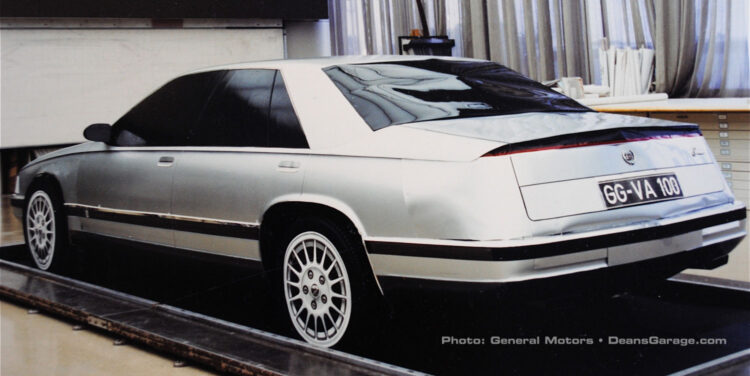
Monday Morning
Getting ready to head off to the studio on Monday, I was a little on edge knowing that Chuck might not be receptive with the studio’s redesigning a theme that he must have felt had merit as the next Seville. I asked my wife Bev if we had our daughters’ college funds taken care of, which she replied that their education was paid for. Bev was confused as to why I was asking about that and I told her what we had been up to in the studio on Saturday and I wasn’t sure what Chuck’s reaction would be today. We were either going to be heroes or we might be in for a stern reprimand.
I arrived before Dick that morning. In Dick’s absence, the call from Chuck’s office was directed to me. Lucy was on the phone. She was her usually bubbly self and told me that Chuck wanted to see me in his office. “Oh, I’m sure he does,” I replied.
Dick was still not in the studio, so I headed up to Chuck’s office mentally preparing myself for the worst. I opened the first set of glass doors where Lucy’s smiling face told me to go right in and that Chuck was waiting for me. I took a deep breath and opened the second set of glass doors. Chuck was sitting at his desk. He looked up as I walked toward him. Pointing a finger at me he said, “Don’t touch it.” To this day I don’t remember if Chuck said anything else, but I knew we had gambled and ended up with a better design, and that Chuck had recognized it. This was something that over time I would reflect back on, knowing that a strong leader knows how to recognize when better solutions present themselves.
Scott Wassell
Chuck Jordan said the DLO graphics looked like “a greyhound on a stretch.” We knew right then we had found the theme.
Dennis Little
High-level Brake Light
Our next challenge was executing the mocked-up design onto the master clay. During this time frame all cars were required to have a DOT approved high-level brake light that was located high in the rear window. As designers we would have much preferred a different location. Our mock-up showed some sort of a light near the top edge of the deck lid.
The challenge was how to get around the DOT rules. The engineer involved with lighting on the project found a loophole. The way the rule was written allowed for the brake light to be moved to the deck lid location.
The next hurdle was how to get a thin brake light for the deck lid. LED lighting was an emerging technology, and this would be the first time LED lighting would be used on a production vehicle.
Clinic research of the new Seville design revealed that the design appealed to both the traditional buyer and the younger buyer, which was Cadillac marketing’s target.
Dick Ruzzin
We had already designed a new STS on the old small Seville that was number one seller in California. The idea of going back to the bustle back was a concept that we could not understand. The model that we got from the advance studio was a conventional notchback. Chuck told us to “do it exactly like that.” That’s the model we took and changed into the final design.
As soon as Chuck left the studio, Dennis and I looked at each other and we both agreed that the rear end was way too low. But because of Chuck’s admonition, we were very cautious about how to change it.
Ray Hildebrandt suggested a series of steps to raise the rear, and that’s what we did. He brought in sculptor Gary Staniec to raise the entire deck every night, on overtime, after management was gone. He would raise it by one inch each night. This went on for about five nights and eventually we got the rear end up where we wanted it. That was the look that we wanted aesthetically, and also it was the ideal position for the deck aerodynamically.
The Seville, in spite of a high volume of cooling air needed for the V8 engine, ended up with a very low drag. Aerodynamically, the rest of the car was perfect with very few changes. The rear quarters were tucking in beautifully as was the sail panel. The drag on that car ended up about .335.
The clay model that we developed, the final Seville design, was not the bustle back clay model. I don’t know who did it. It was developed in an Advanced design studio. We couldn’t believe our eyes.
A show was put together in the patio that included all of the different attempts from the Advanced area to create a Seville along with what would become the final design from Cadillac Studio. Lloyd Reuss was invited by John Grettenberger, the general manager Cadillac to view the final Seville design, and somehow a bustle back proposal from Advanced 1 appeared on the patio with it. That was the first time we’d seen it.
Lloyd was confused, and thought that he was brought there to pick one. He picked the wrong one—the bustle back.
Everyone was stunned, literally speechless. No one knew what to say, we all walked away with that direction. About 20 minutes later, Chuck came into Cadillac Studio and asked me,“What are we going to do?” I couldn’t believe it. He was asking me what to do. Dennis was there and said, “Let’s get the past general manager of Pontiac Division on this.” He was at that time the treasurer for GM. Chuck called him. We explained everything to him and he said, “Don’t worry about it. I’ll talk to Lloyd.”
Chuck got a call about an hour later from Lloyd Reuss. Lloyd said that Chuck and Grettenberger were the ones that should decide. Our Seville design was then back on track. That was one of the many significant suggestions made by Dennis Little that influenced the direction of the program.
Seville Release
After finally getting the design for this Seville, we missed the release date. That meant we fell out of sequence in the overall corporate release schedule. A stream of new designs were continually being released from the studios to our SPE group. It’s a very important and specially managed continuum.
GM had some contractual agreements made with a company that was a supplier to do release work on the GM 10 program, which was changed. Therefore, the outside supplier was available, and it was decided to send the Seville there for release.
Dennis and I went over to meet them and talk about the program. We were flabbergasted to see that it was about 10 students and a couple of people that had worked in the aircraft industry. They had never done a car before and here we were going to give them the design of this car that we had literally sweated blood over. Now they were going to take it and interpret it as the release of digital data to Cadillac so that they could build the cars? We were astounded. Speechless.
But there was nothing we could do. The people were under enormous pressure and Dennis and I spoke several times about how every time we went over there it seemed that they were literally aging before our eyes—they were working 20 hour days.
At 7:00 a.m. on a dark, snowy February day, I went over for the third time and was shown the work they had been doing. They showed me the work that they had been doing. Dennis had been visiting on a regular basis during the day to try to keep them on track. They showed me their drawing of what they had done. They didn’t even know how to present the material. They hung the drawing on a wall, drooping like clothes on a line. The lines were impossible to properly evaluate.
That is completely opposite of what our people in SPE would do. They would lay the original drawing on a table and over it another vellum drawing, slightly translucent so you could see see the original lines on the drawing below and then compare the new lines to the originals. They would offset the two gridded volume sheets by about a quarter of a millimeter at a 45° angle. In that way, you could see the original lines that they had been taken from the clay and the new lines that they had developed and you could compare them directly. It was a great way to do it and very successful.
I told them what I wanted to see and they said we’ll get it ready for you. I then went over and sat on a window ledge and looked outside—it was still snowing. I was not happy. I was totally demoralized.
Suddenly, I felt a hand on my shoulder, I looked up and it was Bob Dorn, the chief engineer of Cadillac. He had heard about what was going on and decided to come over and see for himself. I guess I had a pretty despondent look on my face. After all that time and all the work by all those dedicated to creating a great car for Cadillac Design, here we were with a bunch of amateurs trying to interpret that elegant and sophisticated design for production. I didn’t say anything. Bob said, “Don’t worry Dick, we’re going to fix this.” He turned and walked away. I finished the meeting and went back to Design.
It was about 8:00 a.m. when I arrived in the studio. Marylynn our secretary immediately told me that I needed to go to Chuck’s office for a meeting. I had no idea why. When I arrived there was Chuck, Dave Holls, and Ken Pickering. Ken Pickering was in charge of all engineering at that point in time and the release of the Seville would’ve been a very high priority for him.
Ken asked me what happened. Apparently Bob Dorn called Ken and they were trying to figure out what to do. I remember that it was 8:00 a.m., but it felt like the end of a 12-hour day. We had many of those and I knew what that was like. Chuck just looked at me and said, “Go back to the studio. I’ll call you later. We are going to figure something out. This is not your problem.” Meaning that it was theirs, they understood it, and they would try to fix it. That was somewhat comforting to me, but I did not see a way out.
I went back and started the normal business. Finally, about 10:00 a.m, Ken came in to talk to me. “This is what we’re going to do. I just had a long conversation with my people in SPE,” he said. “As you know SPE is unionized so there is a problem with trying to change schedules and assignments for people. All the SPE supervisors have agreed that they are going to take their vacation time and release this Seville for production. They will do the work.” Even today, over three decades after that event, it brings tears to my eyes.
Our SPE supervisors were master draftsman with years of experience and they had been learning how to do their work with computers. It was normally, as I recall, a 12-week process to release a car from SPE with all the corrected data from the studio.
I think they did it in six weeks as the model was excellent. Nothing was ever said after about that. I’m sure they were paid very well, but they all gave up their vacations for the entire year to work instead, and release the 1992 Seville for production.
That is a story that has never been told. It represents the quality of people that worked at Design Staff, that professional line going back to Harley Earl. That’s why it was so hard to get a job at GM Design, the professional bar was very, very high and the story above is a demonstration of that.
A short Dennis Little story:
One day a group of suits came in the back door of the studio. They all stopped and stood across the studio from us near the opposite wall, and stared.
I asked Dennis, “Who are these guys?”
Dennis replied, “They want to open a restaurant that looks like Cadillac Studio.”
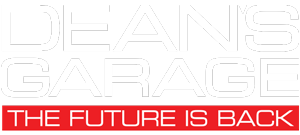

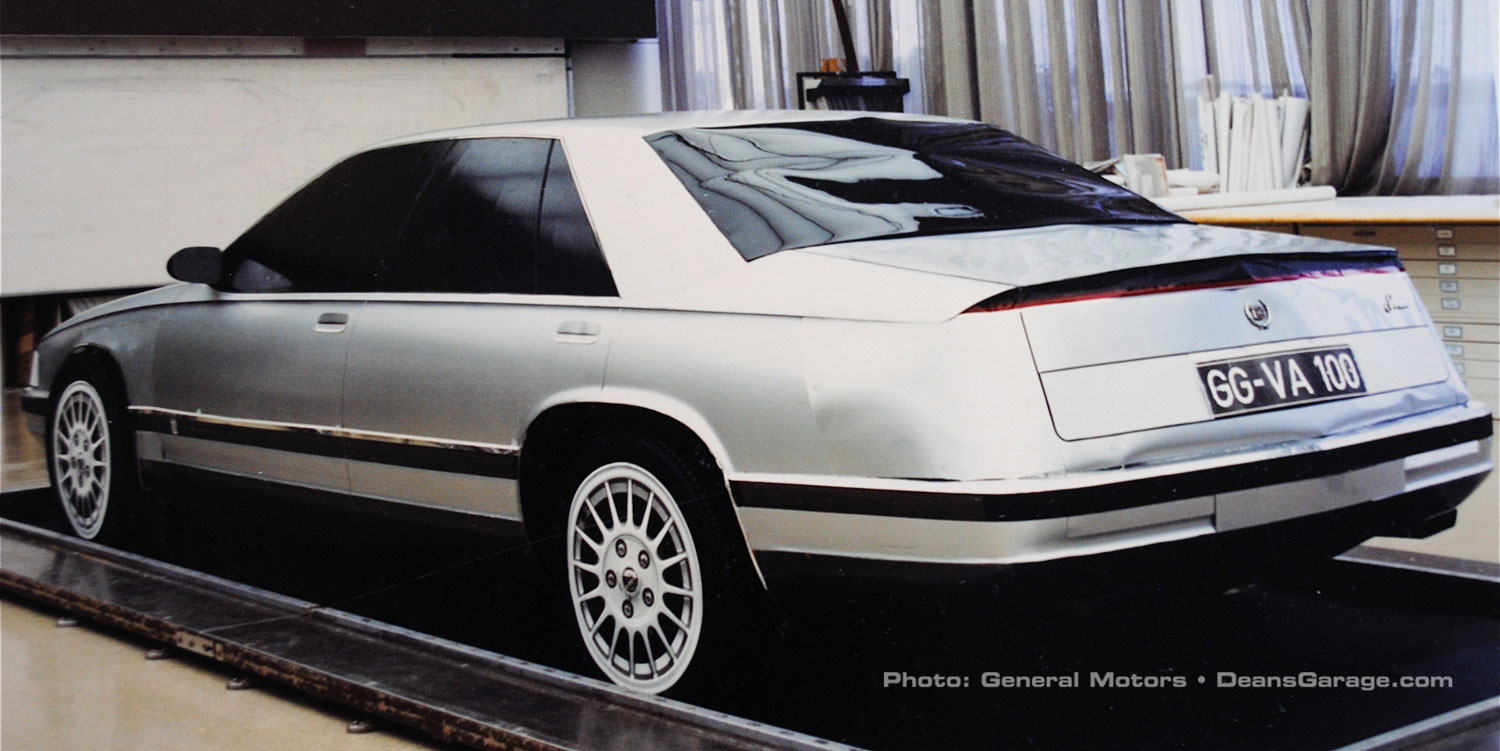
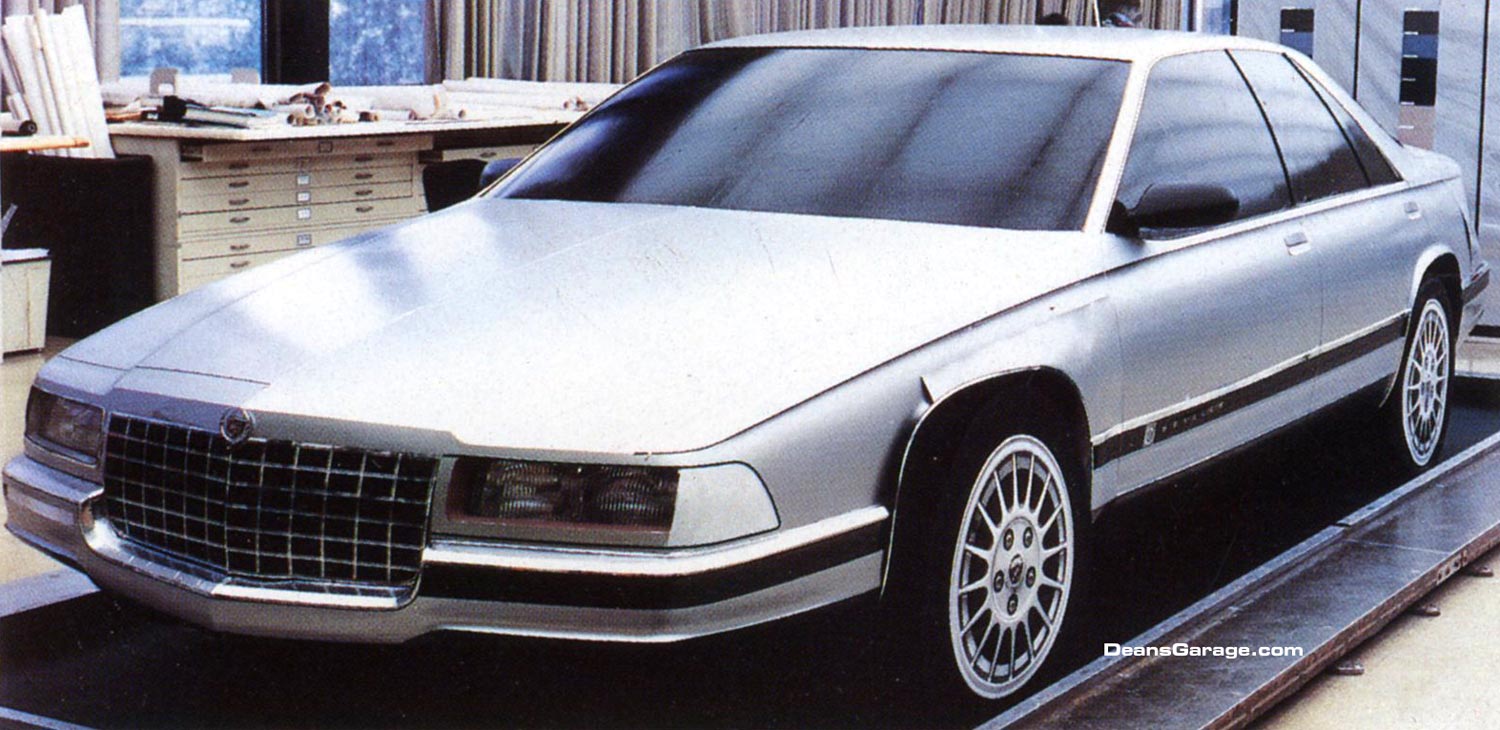
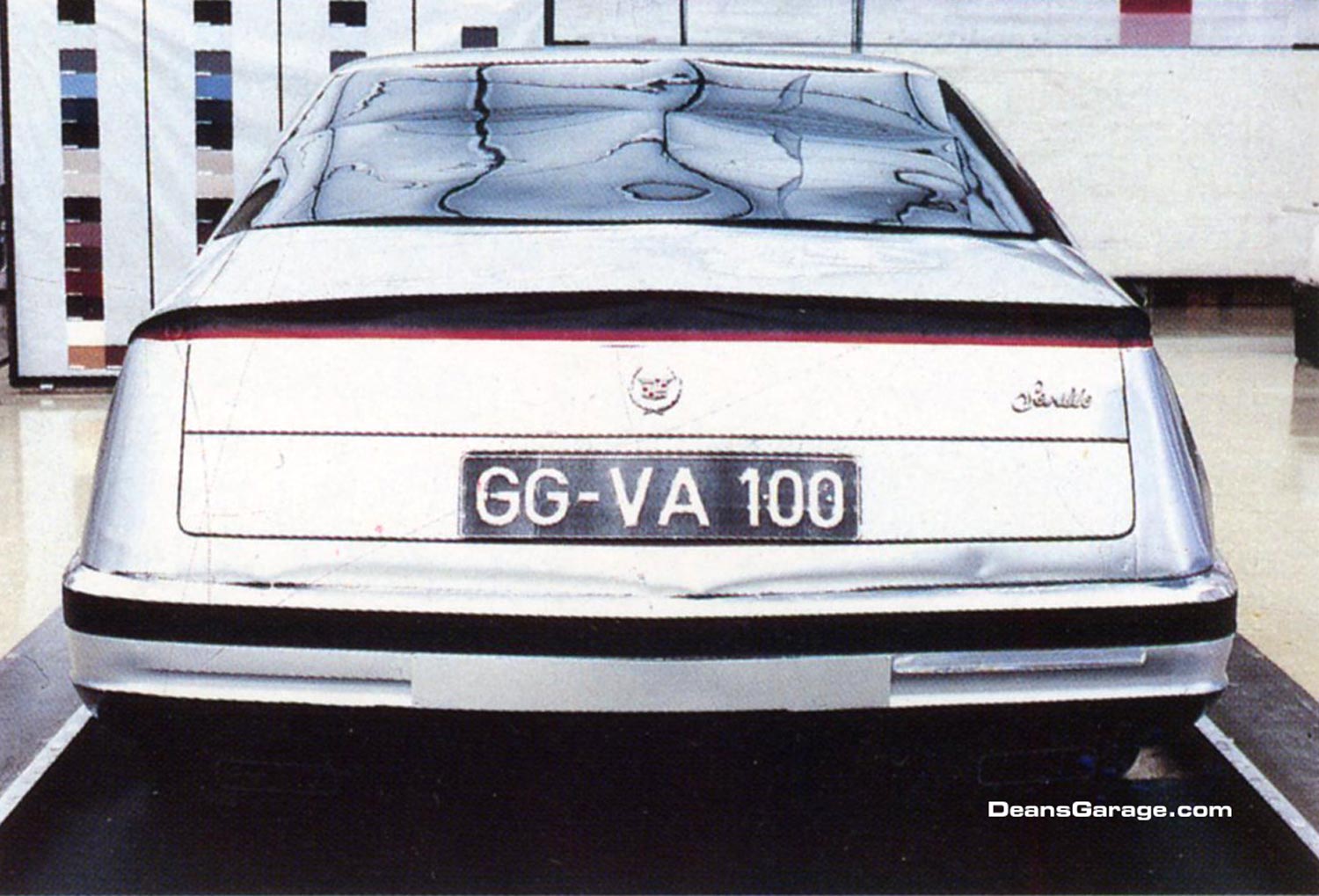

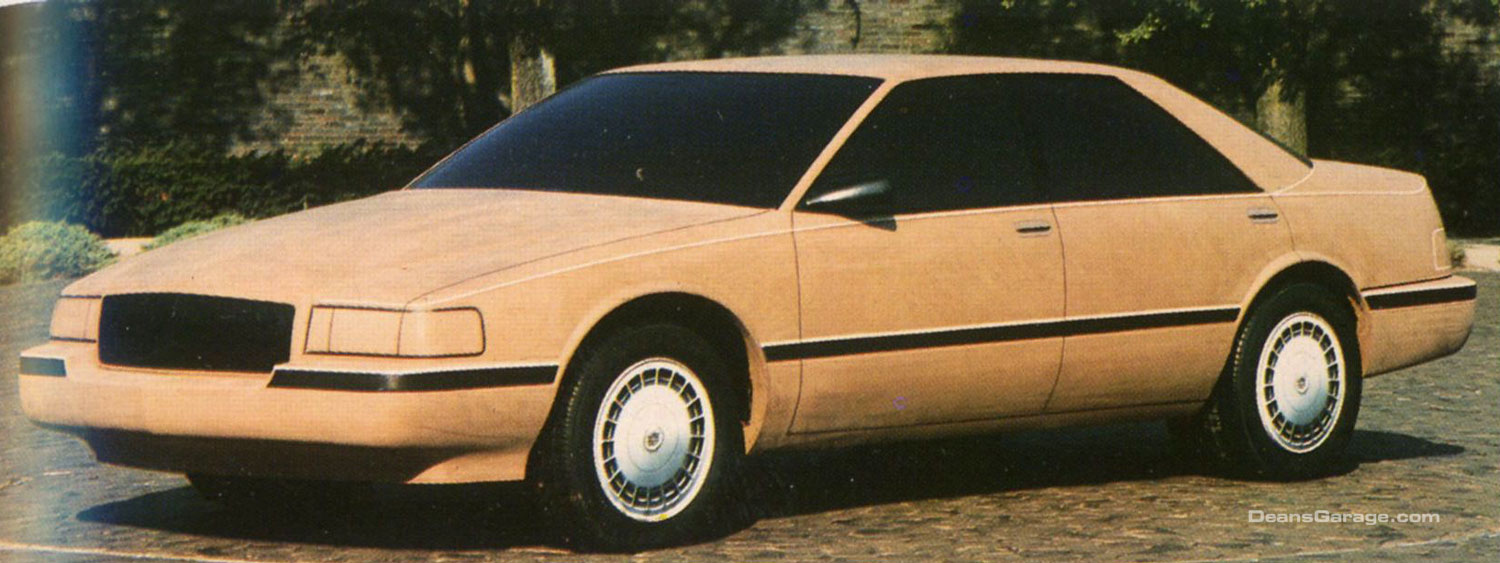

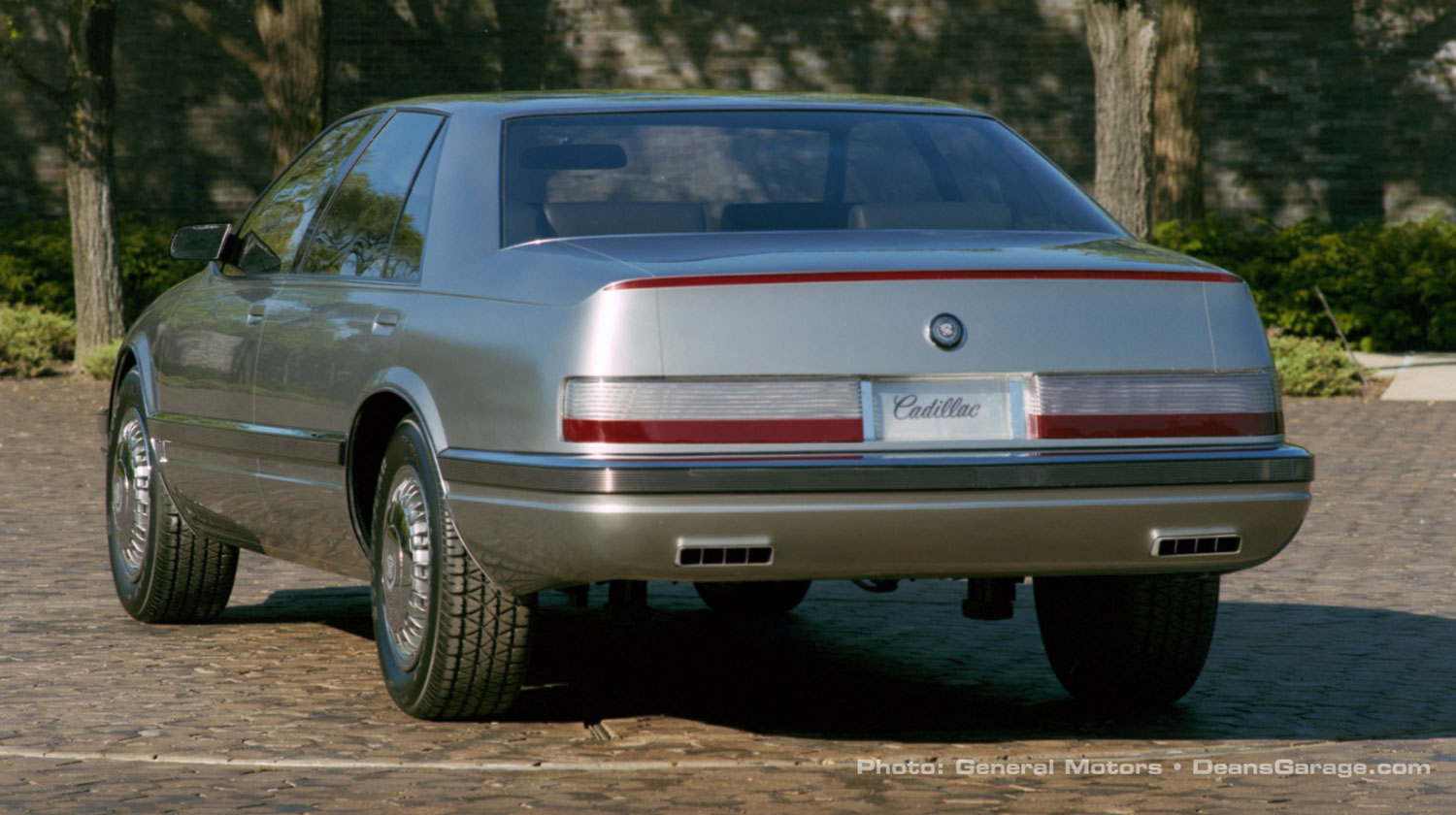
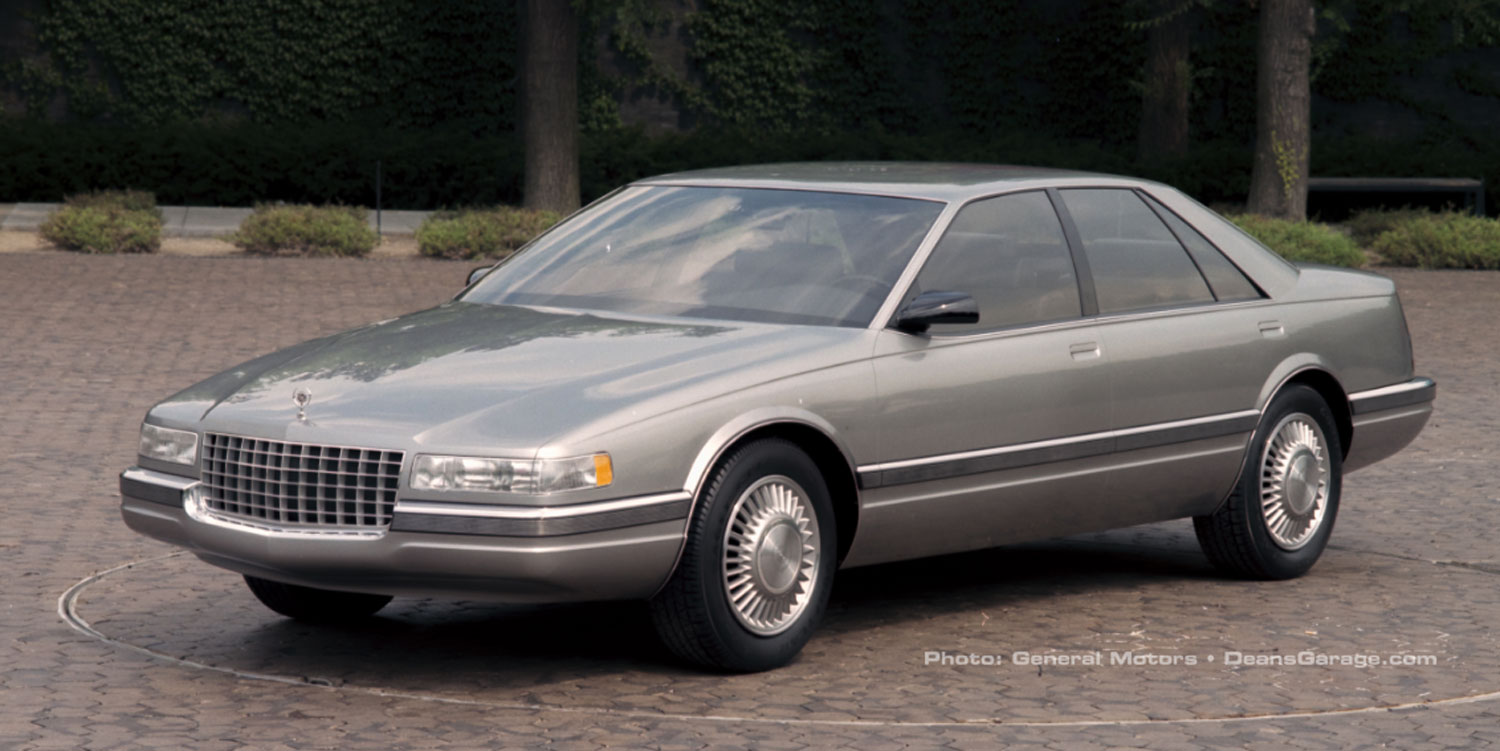
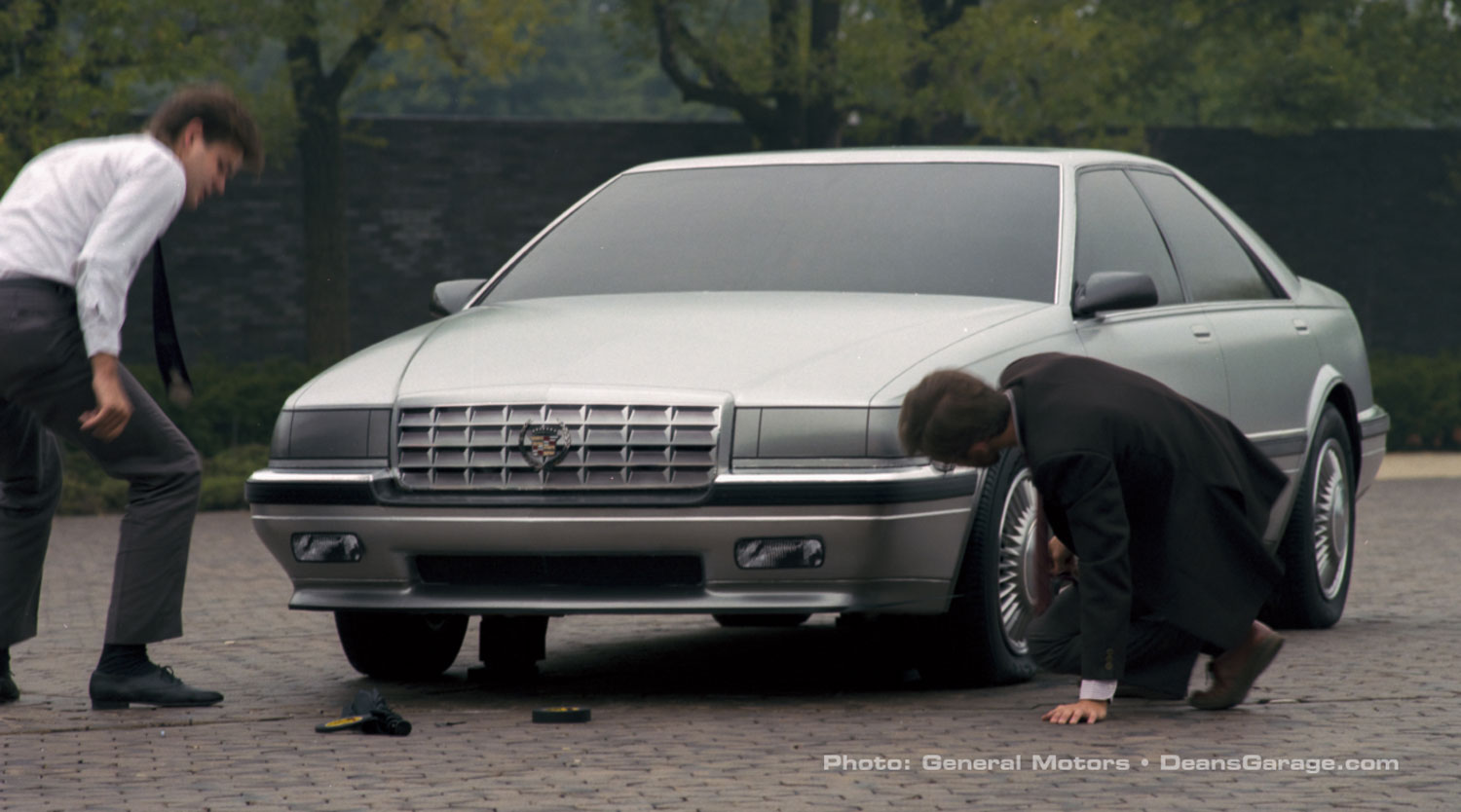
GARY,
One point that we neglected to make about the model that came in from the advanced design studio was that it was cheated 4 inches in height, it was also several inches longer than the car that we would be able to do. In other words, it was 4 inches too low as well as too long. That meant that we had to somehow convert the clay model that was longer and lower and enhance the design character. A tough job. What we had to end up with was a car that would be agreed to by Cadillac. And in all of that, I felt strongly that the cars should be very well done aerodynamically, as the cars that I had directed in CHEVROLET studio had been. But nobody cared about that as the desire to have great Cadillacs just superseded everything and I certainly understood that.
Many thanks Gary…interesting story.
Question: Who deserves the credit or blame?
rvl
For what?
I love reading about all the “Behind the scene” stories, very insightful.
Great post Gary, Thank you.